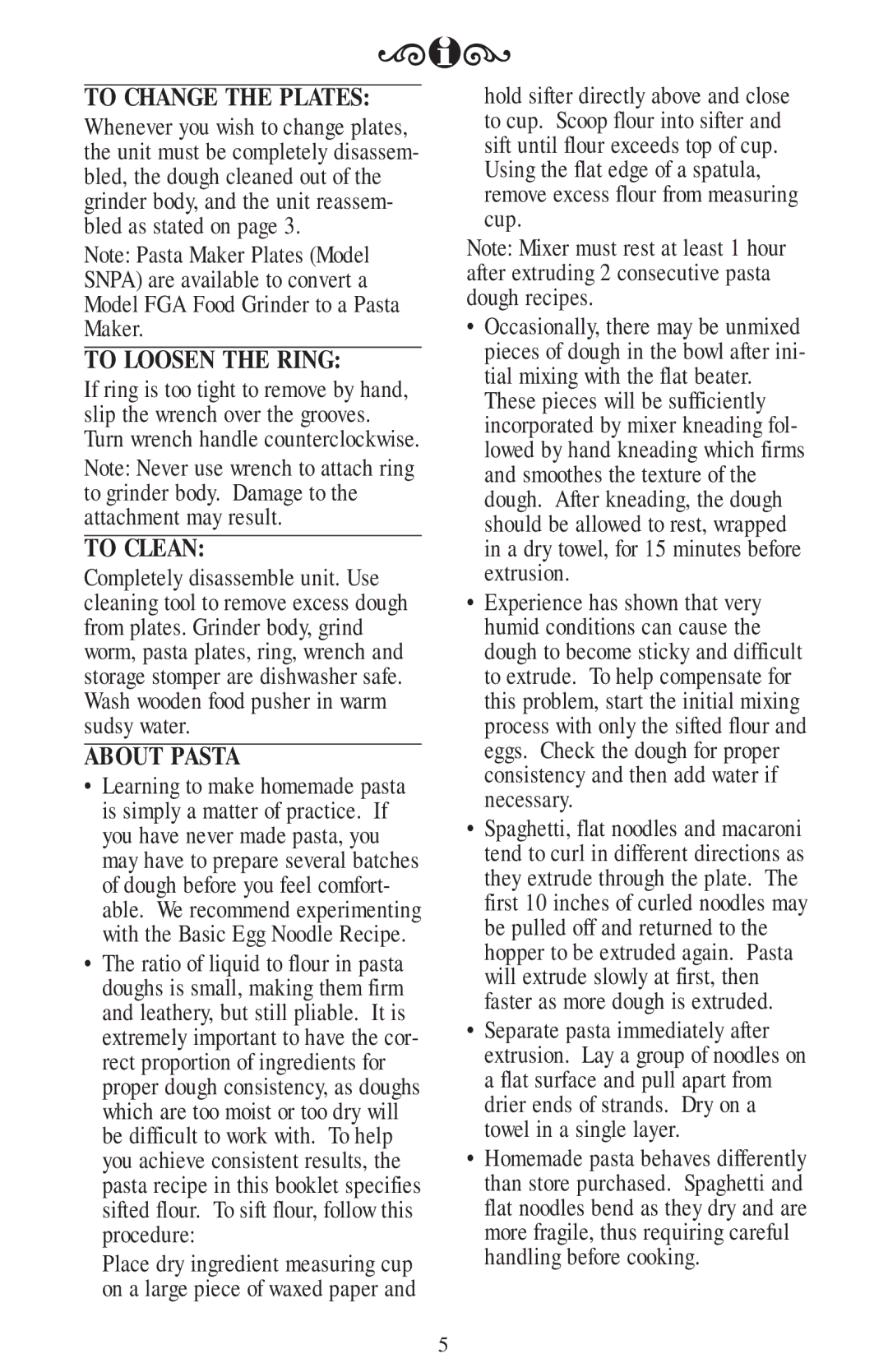SNPA*, SNFGA specifications
The KitchenAid SNFGA and SNPA series are renowned for their exceptional culinary performance and user-friendly features, making them favorites among both amateur cooks and seasoned chefs. These stand mixers stand out due to their sleek design, reliability, and versatility, which allow users to tackle a wide range of cooking tasks with ease.One of the key features of the KitchenAid SNFGA and SNPA models is their powerful motor. The robust 10-speed control ensures that users can mix, whip, and knead a variety of ingredients with precision. From delicate meringues to thick bread doughs, these mixers provide the necessary strength and adaptability to achieve outstanding results.
Another highlight of these mixers is the unique planetary mixing action. This technology allows for thorough ingredient incorporation, as the beater moves around the bowl in an orbital pattern. This ensures that every part of the mixture receives attention and that no ingredients are left unmixed. The result is consistent and uniform textures for any recipe.
The KitchenAid SNFGA and SNPA also come equipped with a variety of attachment options. Users can easily switch out the standard wire whip, flat beater, and dough hook to suit their specific needs. Additionally, a range of optional attachments is available, such as pasta makers, food grinders, and vegetable slicers, turning the stand mixer into a versatile kitchen tool that can perform a multitude of tasks beyond mixing.
Durability is another hallmark of these KitchenAid stand mixers. Constructed with high-quality materials, they are built to withstand the rigors of daily use. The all-metal construction not only adds to the durability but also enhances the visual appeal of the mixer, making it an attractive addition to any kitchen decor.
Moreover, the SNFGA and SNPA models feature a user-friendly bowl-lift design, which provides stability during mixing. The lever-operated bowl-lift allows users to easily raise or lower the mixing bowl, ensuring that the ingredients are positioned correctly for effective mixing.
In summary, the KitchenAid SNFGA and SNPA series exemplifies quality and performance in kitchen appliances. With a powerful motor, innovative mixing technology, versatile attachments, and a durable design, these stand mixers are engineered to elevate the cooking experience, allowing users to unleash their culinary creativity with confidence.

